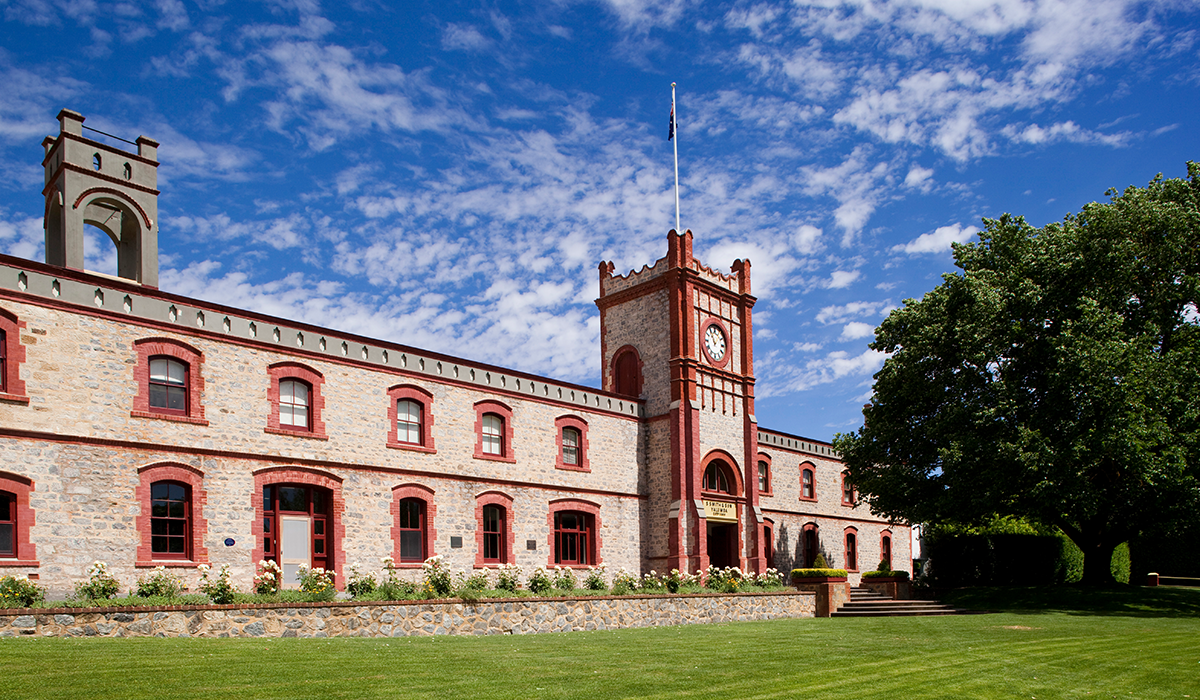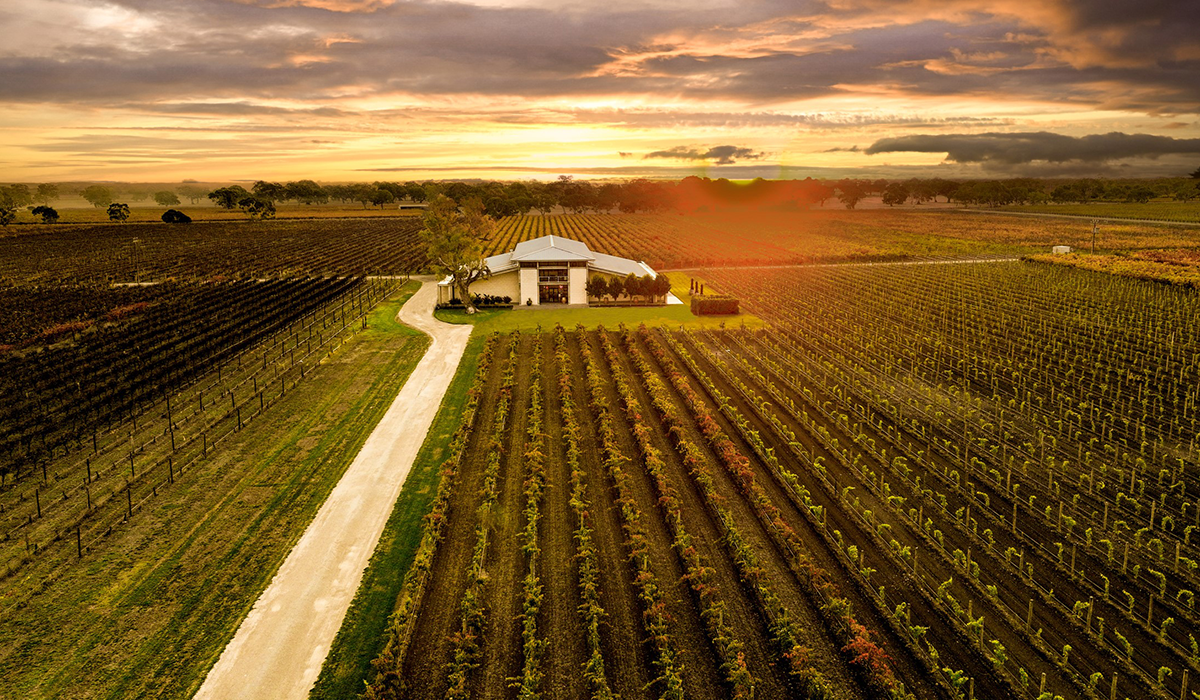There’s an old saying in the industry: ‘A late Easter equals a late vintage.’ This was not the case in 2025. Easter fell in late April, yet winemakers across the country almost universally reported an early vintage, with many claiming the earliest ever. This was mostly thanks to the warmer than average conditions that were also experienced in most Australian regions, particularly those in South Australia, Victoria and Tasmania.
Challenges were faced by growers in New South Wales, where conditions were a little too wet at times, and swathes of South Australia were devastated by spring frosts. Things were better in Western Australia, where most regions described a ‘textbook’ vintage.
Overall, despite what was for many a hard and fast harvest, and the other challenges that arose, reports overwhelmingly indicate an outstanding 2025 vintage across the board, with high-quality fruit and excellent wines expected from many regions.
Find detailed vintage notes on each of the sub-regions of South Australia right here, or get to know what happened across different states by inspecting the complete 2025 Australian Vintage Report.
Drought conditions prevailed in the Barossa Valley for the second year in a row. Despite average rainfall throughout June and July, the previous autumn and period from August to harvest were exceedingly dry – potentially even the driest on record, say some producers. Above average temperatures in August and September led to early budburst (up to 3 weeks earlier than usual), yet disaster struck in the form of two brutal frost events in late September which caused widespread damage to vineyards.
While some vines recovered and were able to set secondary bunches, other producers found their yields severely impacted. Temperatures from October onwards remained above average, and producers say they can’t remember an earlier start to vintage, with some picking as soon as January and most finished by the end of March. But in spite of the many challenges, fruit quality across the board was thankfully excellent, with grenache and shiraz the standouts.
The Eden Valley met similar challenges – low winter rainfall, above average temperatures, and damaging frosts – but they were somewhat mitigated by the diurnal variance in the region due to its elevation. Meticulous vineyard management also protected against the worst of the season and, while yields were down, quality – particularly shiraz and riesling – is very high, with fruit showing exceptional concentration and tannin structure.
The Clare Valley also faced arid conditions throughout winter, spring and summer, with many dams running dry. But the region’s elevation and diurnal cooling effects meant that, for those who had access to water, fruit quality was excellent. Riesling and cabernet sauvignon were particularly good, as were grenache and fiano.
 Yalumba in the Eden Valley.
Yalumba in the Eden Valley.
McLaren Vale experienced a good season overall although, like elsewhere in the country, dry and warm conditions meant budburst, flowering, veraison and harvest arrived earlier than ever before, with some producers picking from late January. Yields were slightly above average, and cool nights helped retain acidity in the fruit. Reds were big, rich and fragrant.
Conditions were a little more stable in the Adelaide Hills. Although winter saw lower than average rainfall and the need to supplement with irrigation, the dry and sunny spring was good for flowering and the warm summer meant disease pressure was low. While it may not go down as one of the greatest vintages in history, the overall quality is still good, and the wines may even be better than initially predicted.
Coonawarra also experienced a strong 2025 vintage. Rainfall during spring and early summer was good, which lessened the impact of a dry January and February. Temperatures overall were warmer than average, which led to early budburst, although thankfully the region was spared the frosts that devastated others in the state. Conditions during ripening were generally excellent and, although there were several hot periods, below-average overnight temperatures in March assisted with acid retention and colour development.
Despite early budburst, veraison aligned with the long-term average and, despite initial predictions, harvest in Coonawarra was not particularly early – one producer puts it on par with 2018. Yields were moderate in whites and low for reds and, while quality is generally outstanding, riesling, chardonnay, shiraz and cabernet sauvignon were the standout varieties.
 Parker Coonawarra Estate in Coonawarra.
Parker Coonawarra Estate in Coonawarra.
Winter was dry in Wrattonbully, although spring saw average temperatures and rainfall which set the scene for a fruitful vintage. Dry conditions throughout summer and early autumn accelerated ripening and fruit was superb, with the whites showing great balance and the reds showing great depth of flavour.
Padthaway also saw a dry start to the season although, except for some rain in late November and early December, the dry conditions continued through to harvest. Disease pressure was low as a result and yields were moderate, with good quality reported across the board. Chardonnay was again the standout, although shiraz and cabernet sauvignon looked good too.
Producers in Langhorne Creek reported a stellar 2025 vintage, citing water availability as the biggest challenge. As elsewhere, harvest was early and compressed and fruit quality was high. Cabernet sauvignon yielded smaller berries with structured tannins, shiraz showed lifted aromatics and elegant character and malbec was generally outstanding.
 Bleasdale in Langhorne Creek.
Bleasdale in Langhorne Creek.
In Southern Fleurieu, the weather was dry, warmer than average and windy at flowering, which affected yields. Despite this, quality was high, with shiraz the standout.
Vintage 2025 was a challenging one on Kangaroo Island, largely due to a lack of water. Little to no rain for over 18 months left some vineyards completely dry, impacting canopy growth and flowering, and temperatures in the months leading up to harvest were extreme. However, while yields were way down, fruit quality was quite good. Sauvignon blanc outperformed the other white varieties, and tempranillo, which thrives in dry and hot conditions, was the best of the reds.
In Mount Benson/ Robe, winter rainfall was average although conditions became steadily drier as the seasons progressed. Temperatures in the lead up to and including harvest were warm, yields were high and fruit was clean and of very good quality, especially chardonnay, pinot gris, sauvignon blanc and pinot noir.
Conditions were also challenging in the Riverland. A warm, dry winter led to an early budburst, followed by multiple frost events which caused widespread damage. The region experienced one of its driest growing seasons on record for the second year, with combined spring and summer rainfall totalling less than 100mm. Temperatures were also higher than average, with many days exceeding 35°C during the critical December–January period and, as a result, harvest was a week or 2 earlier than average across most sites.
However, those vineyards unaffected by the spring frosts, and with irrigation strategies in place, reported above-average yields and excellent-quality fruit. The warmer conditions meant that traditional varieties that thrive in the heat were the standouts, namely chardonnay and shiraz.
Discover more regional insights from the 2025 Australian vintage with the Halliday Vintage Chart.
Join Halliday Wine Club to drink the very best of Australian and New Zealand wine
Are you an explorer, enthusiast or collector? No matter the Halliday Wine Club plan you choose, each month we'll deliver two bottles of 95+ point wines direct to your door. From $89 per month. You can skip, pause or cancel anytime. Join now.
The 2026 Halliday Wine Companion is available now. Secure your copy of Australia's most comprehensive wine guide at all good bookstores.
This is an edited extract from the 2026 Halliday Wine Companion, with reviews by Dave Brookes, Jane Faulkner, Jeni Port, Katrina Butler, Marcus Ellis, Mike Bennie, Philip Rich, Shanteh Wale and Toni Paterson MW.
Top image credit: Greenock Creek.